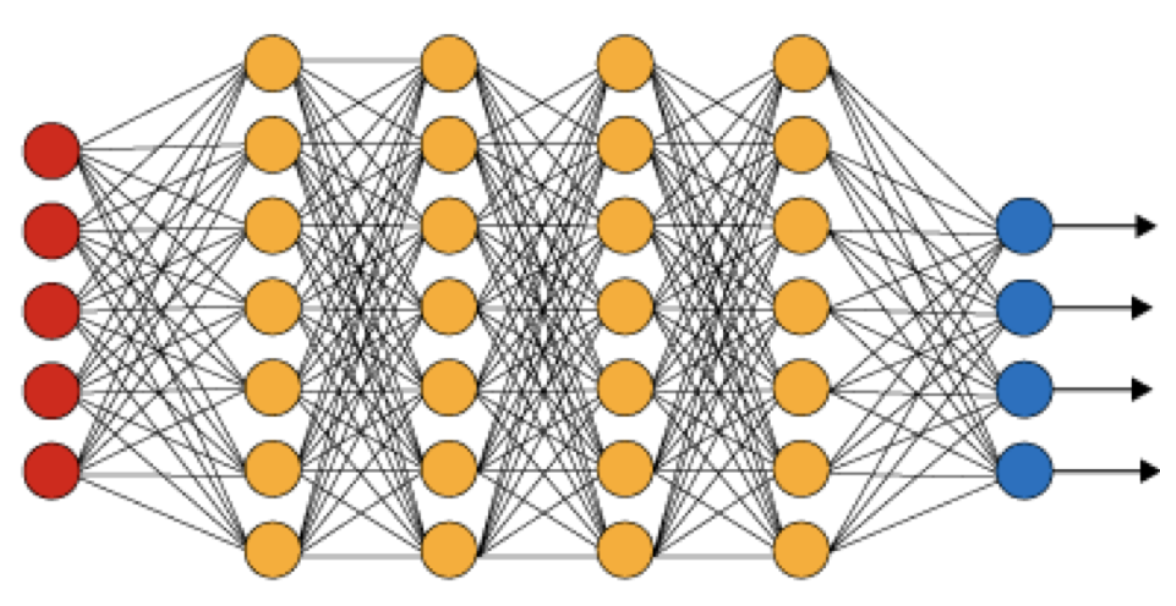MENU
Skip menuResearch Interests
- Mobile and Pervasive Computing and Embedded Systems
- Cyber Security and Privacy
- Deep Learning Optimization for Mobile Computing
- Wireless Networks and Sensor Networks
Research Grants
- Efficient and Robust Multi-model Data Analytics for Edge Computing
- Sponsor: National Science Foundation (NSF), PI, Duration: 2023 - 2026.
- CAREER: Efficient Mobile Edge Oriented Deep Learning Framework
- Sponsor: National Science Foundation (NSF), PI, Duration: 2022 - 2027.
- Nation-wide Community-based Mobile Edge Sensing and Computing Testbeds
- Sponsor: National Science Foundation (NSF), PI, Duration: 2021 - 2024.
- Software Hardware Architecture Co-design for Low-power Heterogeneous Edge Devices
- Sponsor: National Science Foundation (NSF), PI, Duration: 2019 - 2022.
- Planning: Hardware-accelerated Trustworthy Deep Neural Network
- Sponsor: National Science Foundation (NSF), PI, Duration: 2019 - 2021.
- Ubiquitous Sensing based Location-aware Driving Safety System
- Sponsor: National Science Foundation (NSF), PI, Duration: 2016 - 2019.
Research Projects
 |
Driver Phone Use Detection Leveraging Sensors in Smartphones. Distracted driving due to mobile devices contributes to nearly one thousand fatalities per year and is now receiving attention not only from government regulators but also within the highest executive levels of the mobile industry. This project seeks to utilize various sensors integrated in smartphones, e.g., accelerometers, gyroscopes, and magnetometers, to effectively determine whether the phone is used on the driver side or passenger side, which can facilitate many traffic safety applications. Research News: MIT Technology Review, The Wall Street Journal, Fox News Channel, Voice of America TV, WCBS, Inside Science TV (ISTV), the Tonight Show with Jay Leno, New Jersey Channel My9, National Public Radio (NPR), CNet News, Yahoo News, Sohu, Sina, etc. |
||
 |
Tracking Human Queues Using WiFi Signals. Real-time quantification of the waiting and service times in such queues allows optimizing service processes, ranging from retail, to heath care, to transportation and entertainment. More complete waiting and service time statistics allow customers, travelers, managers and service providers make changes to their behavior and processes. In this project, we seek to develop a mechanism that can effectively track waiting and service times of persons in queues, which enables further queue optimization. Towards this end, we develop a system that uses a single sensor, a WiFi monitor near the head of the queue, to track human queues in real time by examining the unique patterns exhibited in the WiFi traffic, which is generated by mobile devices used in queues. |
||
 |
Vital Sign Monitoring Leveraging Channel State Information. Human vital signs such as breathing and heart rates are important information that reflects the physical health of a person. Real-time quantification of these vital signs enables many applications, e.g., sleep quality monitoring, physical health status tracking, and clinical diagnosis. This project explores new methodology leveraging channel state information (CSI) from readily available 802.11n device to sense small body movement caused by breathing and heart beating. Our solution provides accurate estimation for breathing and heart rates in both lab and real bedroom environments. |
||
 |
Ubiquitous Sensing based Location-aware Driving Safety System. This project seeks to conduct a comprehensive study to understand to what extent the current mobile devices can model various real-world driving behaviors and corresponding vehicle dynamics. A new real-time mobile sensing system, which combines real-time mobile sensing and heterogeneous driving environments, is developed to address driving safety concerns. The final results will be the abiding principles of cyber-physical architecture that resolve dynamic impacts of complex environments and provide clear guidelines over Internet of Things (IoTs). This project is partially funded by the National Science Foundation, PI: Yan Wang. |
||
 |
Dangerous Object Detection Using WiFi Signals. The growing needs of public safety urgently require scalable and low-cost techniques on detecting dangerous objects (e.g., lethal weapons, homemade-bombs, explosive chemicals) hidden in baggage. Traditional baggage check involves either high manpower for manual examinations or expensive and specialized instruments, such as X-ray and CT. As such, many public places (i.e., museums and schools) that lack of strict security check are exposed to high risk. This project aims to utilize the finegrained channel state information (CSI) from off-the-shelf WiFi to detect suspicious objects that are suspected to be dangerous (i.e., defined as any metal and liquid object) without penetrating into the user’s privacy through physically opening the baggage. |
||
 |
Fine-grained Mobile Sensing Using PPG Sensing. This projects aims to subvert the traditional understanding of Photoplethysmography (PPG) and open up a new direction of the utility of PPG in commodity wearable devices, especially in the domains of human computer interaction (e.g., sign language translation), mobile security (e.g., user authentication), and fine-grained mobile healthcare (e.g., blood pressure and glucose estimation). |
||
 |
Deep Learning Opitmization for Mobile Devices Using Hardware and Software Co-design. The primary goal of this project is to develop cutting-edge algorithms and computer architectures that enables the broad deployment of heavy-cost deep learning models into resource-constrained, heterogeneous mobile edge devices (e.g., low-cost sensing platforms and IoT devices). This project analyzes distinct deep learning behaviors on mobile edge devices and designs different strategies to improve the efficiency of multiple deep-learning-based inference models. Furthermore, this project develops algorithms that can adjust the complexity of different deep learning models to reduce their energy and memory consumption on mobile edge devices. |